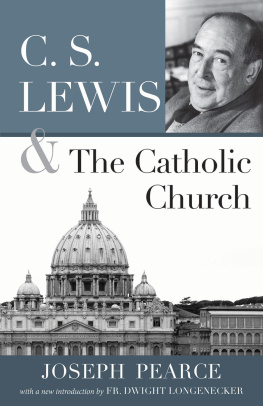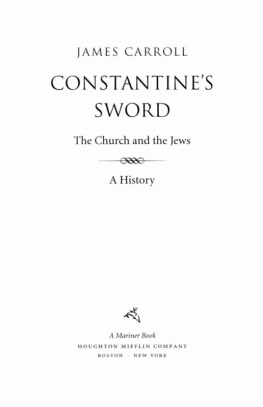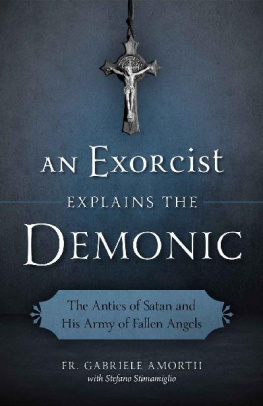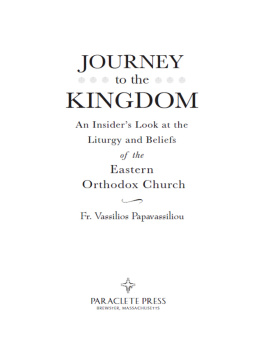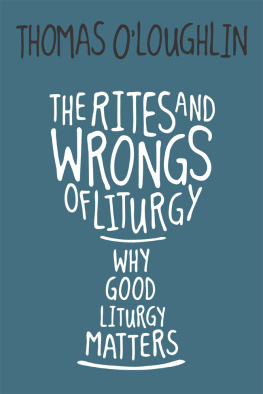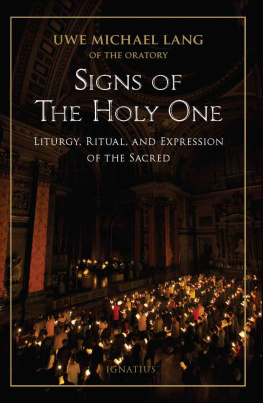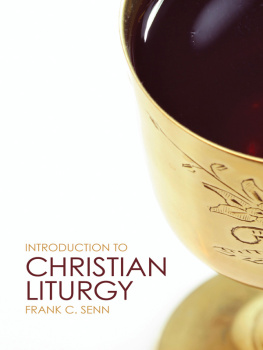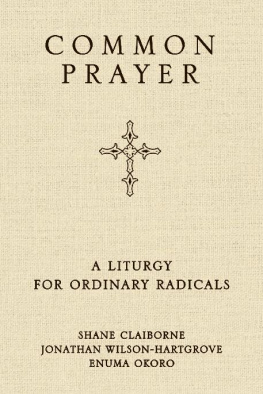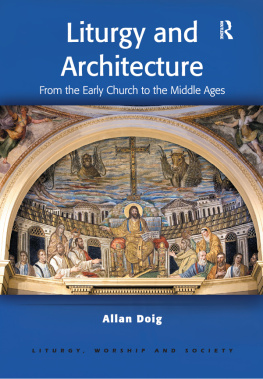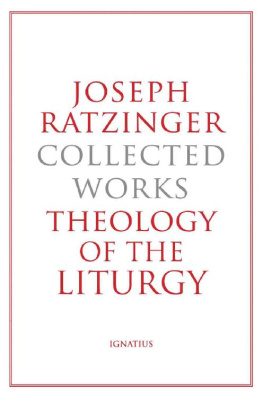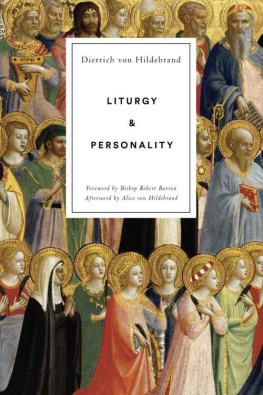This important book reminds us again and again that the liturgy is primarily not about what we do for God but what God does for us in a unique way through the liturgy. Throughout Boselli penetrates to the spiritual heart of the liturgy. A much-needed book at a time when debates about liturgy are all too often about externals, not the inner depth of what liturgy is and does. The authors invitation that we truly listen to God speaking to us through word and sacramentas simple as that soundsis a much-needed lesson not only about liturgy but about the Christian life.
Rev Msgr. Kevin W. Irwin
The Catholic University of America
In this book, we come to understand better the connections between what we do in the liturgy and our spiritual relationship with Christ. Contemplation and interiority arise from ritual action and communal experience: this is the paradox that makes this volume a precious occasion for personal and communal reection on the topic.
Andrea Grillo
Professor of Sacramental Theology
Pontical Atheneum of Saint Anselm, Rome
Author of Beyond Pius V: Conicting
Interpretations of the Liturgical Reform
This book offers a sound mystagogy based primarily on Scripture and the writings of the fathers that will be of value to those engaged in the task of liturgical formation.
Paul F. Bradshaw
Professor of Liturgy (Emeritus)
University of Notre Dame
Author of Rites of Ordination: Their History
and Theology
Reading Bosellis book is like going on retreat. He has meditated deeply on links between liturgical actions and the words of Scripture. You will enter a profound reflection on the Eucharist you share and the life you lead.
Paul Turner, Pastor, St. Anthony Parish,
Kansas City, Missouri
Facilitator, International Commission on
English in the Liturgy
Today perhaps more than ever we need to deepen our spiritual understanding of the churchs liturgy. Boselli provides us with a genuine mystagogy, leading to a profound appreciation of the depths of the liturgy and rooted solidly in the Scriptures and the early Christian writers. His work brings out the nature of the liturgy as primarily a gift from God, Gods work among us, calling us to listen to his word and respond. It will be of enormous value to ministers, scholars, and the worshiping faithful alike.
John F. Baldovin, SJ
Professor of Historical and Liturgical Theology
Boston College School of Theology and Ministry
Cover design by Jodi Hendrickson. Illustration: The Liturgical Path of the Christian, miniature (eleventh century), Commentary on the Canticle of Canticles, ms. Bibl. 22, f. 4v, Staatsbibliothek, Bamberg.
Excerpts from the English translation of the General Instruction from The Liturgy of the Hours 1973, 1974, 1975, International Commission on English in the Liturgy Corporation (ICEL); excerpts from the English translation of Eucharistic Prayers for Masses with Children 1975, ICEL; excerpts from the English translation of The Roman Missal 2010, ICEL. All rights reserved.
Unless otherwise indicated, excerpts from documents of the Second Vatican Council are from Vatican Council II: The Basic Sixteen Documents, edited by Austin Flannery, OP, 1996. Used with permission of Liturgical Press, Collegeville, Minnesota.
Unless otherwise indicated, Scripture texts in this work are taken from the New Revised Standard Version Bible 1989, Division of Christian Education of the National Council of the Churches of Christ in the United States of America. Used by permission. All rights reserved.
2014 by Order of Saint Benedict, Collegeville, Minnesota. All rights reserved. No part of this book may be reproduced in any form, by print, microfilm, microfiche, mechanical recording, photocopying, translation, or by any other means, known or yet unknown, for any purpose except brief quotations in reviews, without the previous written permission of Liturgical Press, Saint Johns Abbey, PO Box 7500, Collegeville, Minnesota 56321-7500. Printed in the United States of America.
The Library of Congress has cataloged the printed edition as follows:
Library of Congress Cataloging-in-Publication Data
Boselli, Goffredo.
[Senso spirituale della liturgia. English]
The spiritual meaning of the liturgy : school of prayer, source
of life / Goffredo Boselli ; translated by Barry Hudock ; foreword
by Paul De Clerck.
pages cm
A Liturgical Press book.
ISBN 978-0-8146-4906-0 ISBN 978-0-8146-4919-0 (ebook)
1. Catholic ChurchLiturgyHistory20th century. 2. Catholic
ChurchLiturgyHistory21st century. 3. Liturgics. I. Title.
BX1975.B6713 2014
264'.02dc23 2014011979
Contents
Paul De Clerck
Foreword
You have in your hands an important book. It sheds light on the current situation of the liturgy, fifty years after the Second Vatican Council and initial efforts at applying the Constitution Sacrosanctum Concilium. This distance in time allows the author to take account of the long experience of the liturgical reform, including a deeper understanding of the very meaning of the liturgy itself. In fact, it is in regard to the latter topic that this book makes its most significant contributions. In a certain sense, the introduction summarizes well everything the book has to say:
[T]he future of Christianity in the West depends largely on the churchs capacity to allow its liturgy to become the source of the spiritual life of all believers. For this reason, the liturgy represents an important challenge for the church today. I am increasingly convinced that the decisive question that demands an answer from us is not so much how believers experience the liturgy but whether believers live from the liturgy they celebrate.
So that Christians can live from the liturgy, Goffredo Boselli offers us a method: mystagogy. Just as lectio divina allows us to penetrate the depths of the meaning of the Scriptures and to live that meaning more authentically, mystagogy introduces us to the mystery. What lectio divina is for Scripture, mystagogy is for the liturgy. Unlike those who conceive understanding the liturgy as intellectually subduing and making its contents our own, here we read that in celebrating the mystery, we are initiated into the mystery. [The] close connection between Scripture and liturgy is the essence of the fathers spiritual intuition, and it is made concrete through mystagogy.
The author presents his thinking over a series of chapters, offering a mystagogy of several key moments of the eucharistic liturgy and exploring topics such as the role of the liturgy in the life of the church, liturgy and love for the poor, and the way the liturgy transmits the faith. The author, though a monk, is not satisfied to confine his thoughts to matters of spirituality. He is attentive at all times to the liturgical-theological foundation of his thinking, taking, for example, the ritual of the breaking of the bread as a starting point for identifying the social consequences of the celebration. He is able constantly to extract from the rites their quintessence, in the sure conviction that the meaning of the liturgy must determine liturgical praxis, and for this reason the first and fundamental school of the liturgy is the liturgy itself. Each of these chapters are marked profoundly by a living awareness that the liturgy provides its own explanation of itself, naturally, and that it bears great theological importance for Christians of today and tomorrow. Throughout the presentation of his arguments, the author demonstrates his thorough immersion in a solid biblical and patristic, theological and liturgical culture.


